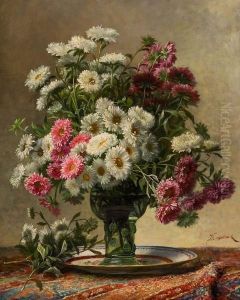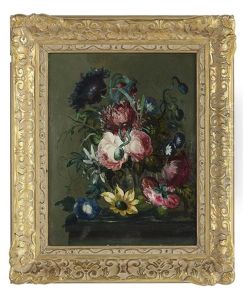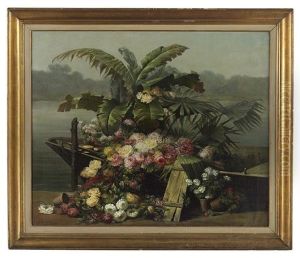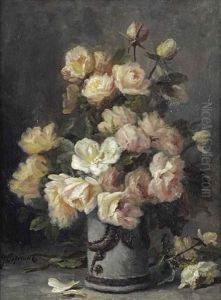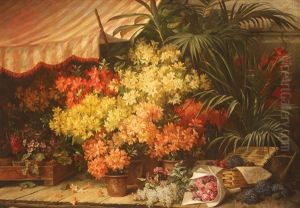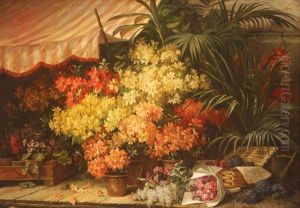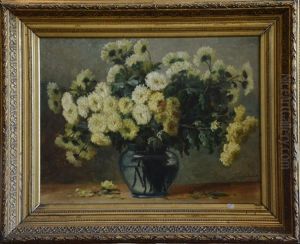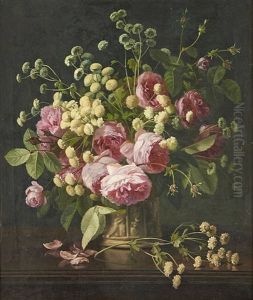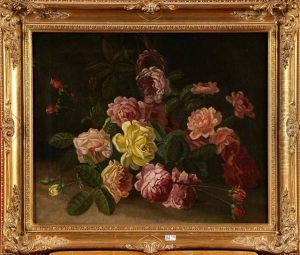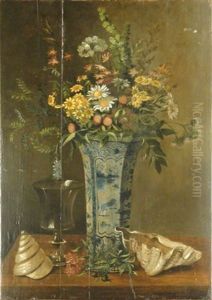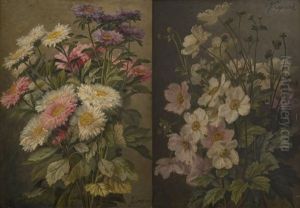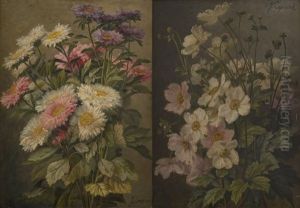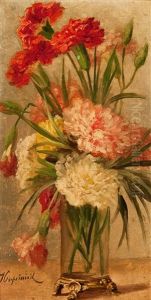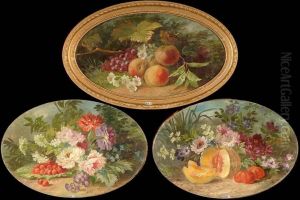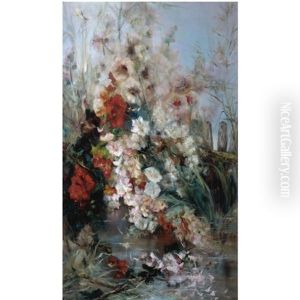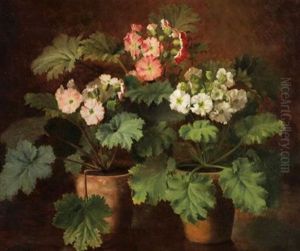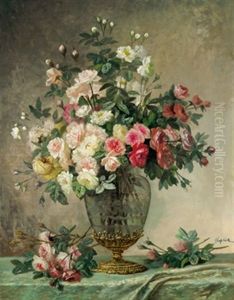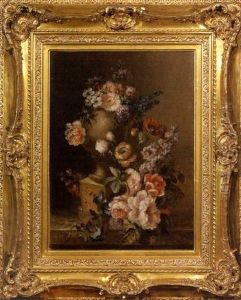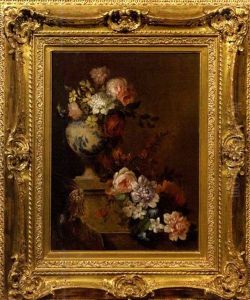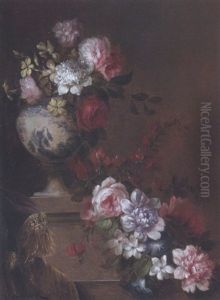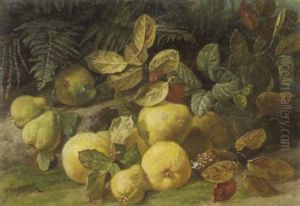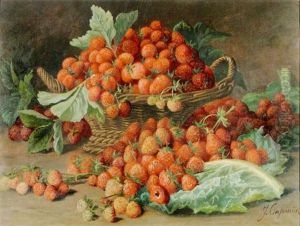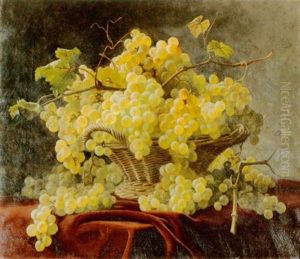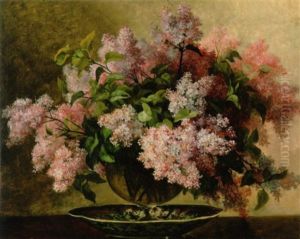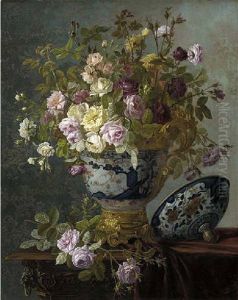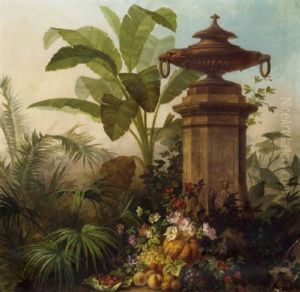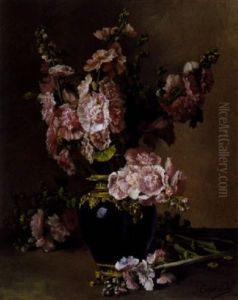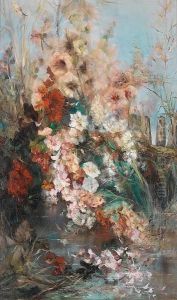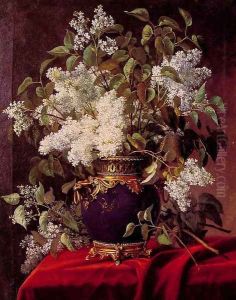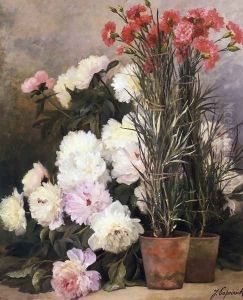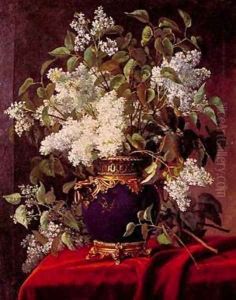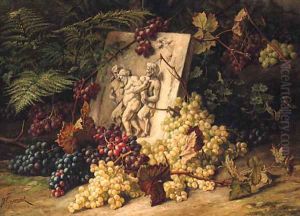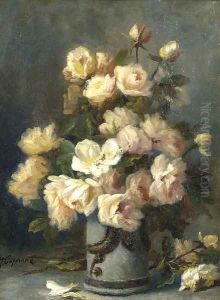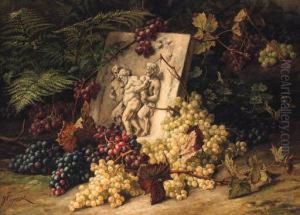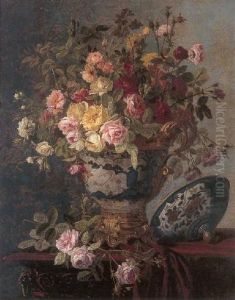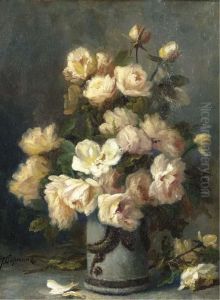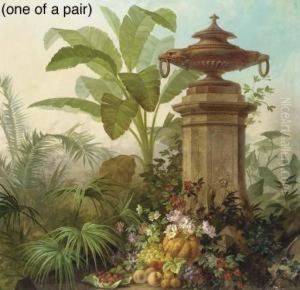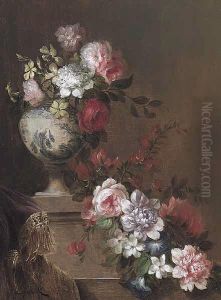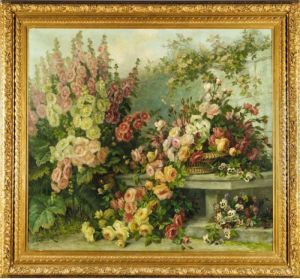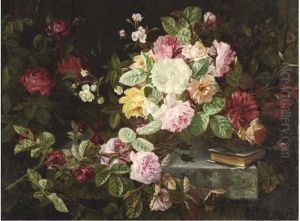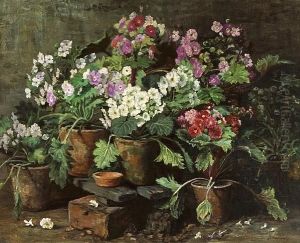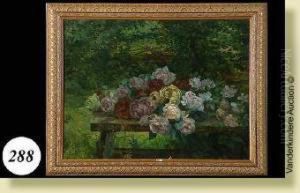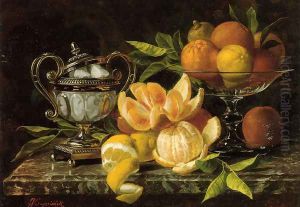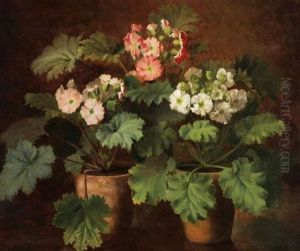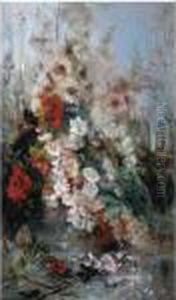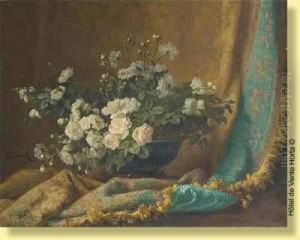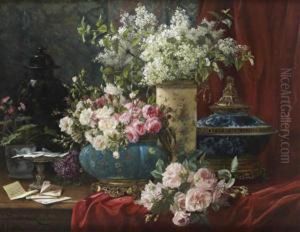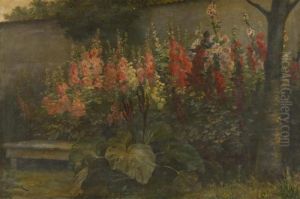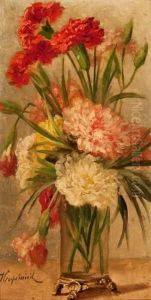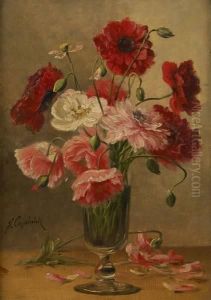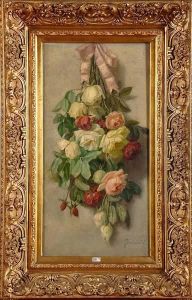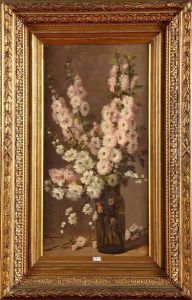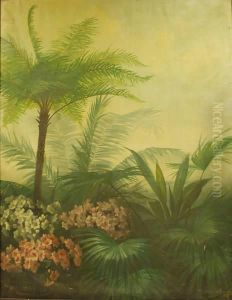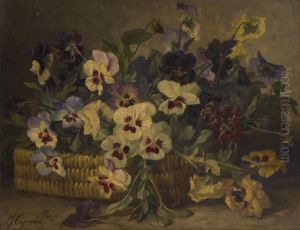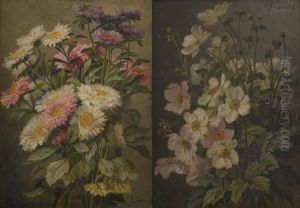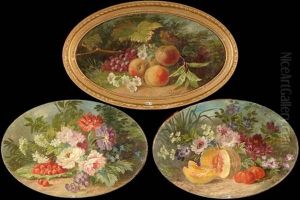Jean Capeinick Paintings
Jean Capeinick was a Belgian painter known for his still lifes, particularly his lush floral arrangements, and his genre scenes. Born in Ghent, Belgium, on February 8, 1838, Capeinick was trained at the Academy of Fine Arts in Ghent under the guidance of Théodore-Joseph Canneel and later at the Antwerp Academy. He was deeply influenced by the Flemish and Dutch painting traditions, particularly the 17th-century still life painters who excelled in capturing the texture and variety of flowers and other objects.
Capeinick's career flourished as he became known for his ability to depict flowers with a lifelike vibrancy and detail. His compositions often included a rich array of flowers such as roses, tulips, and peonies, arranged in ornate vases and complemented by intricate details like dewdrops and insects. His work was characterized by a dramatic use of light and shadow, with a focus on creating a sense of depth and volume.
Throughout his career, Capeinick exhibited his works in various salons and galleries, gaining recognition and accolades. He was particularly popular in France, where his paintings appealed to the tastes of the time for opulent and decorative art. In addition to his still lifes, Capeinick also painted genre scenes that depicted everyday life with a sense of romanticism and nostalgia.
Jean Capeinick's work was part of the artistic movement that bridged the gap between the academic art of the early 19th century and the more modern approaches that would emerge later. While he did not achieve the same level of fame as some of his contemporaries, his paintings have continued to be appreciated for their technical skill and beauty.
Capeinick died on March 18, 1890, in Ghent. Today, his paintings can be found in various art collections and museums around the world, contributing to the legacy of Belgian art from the 19th century.

